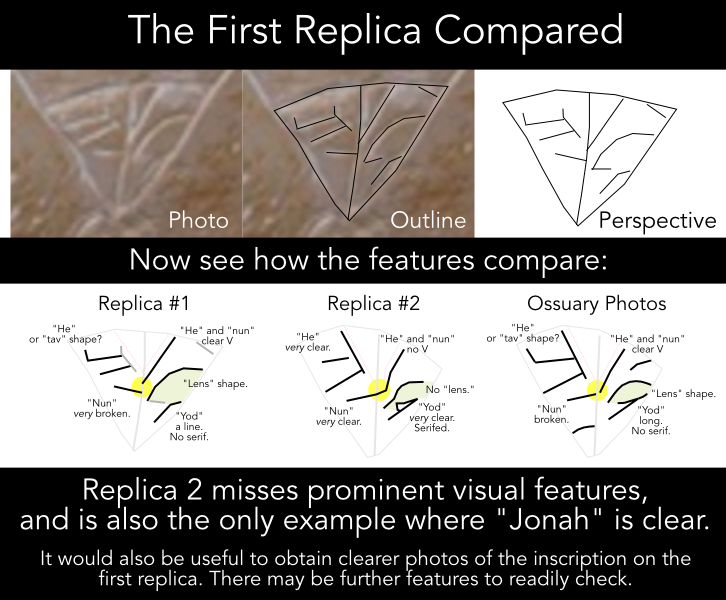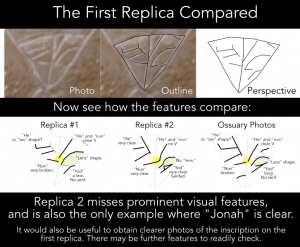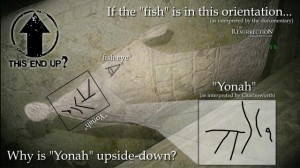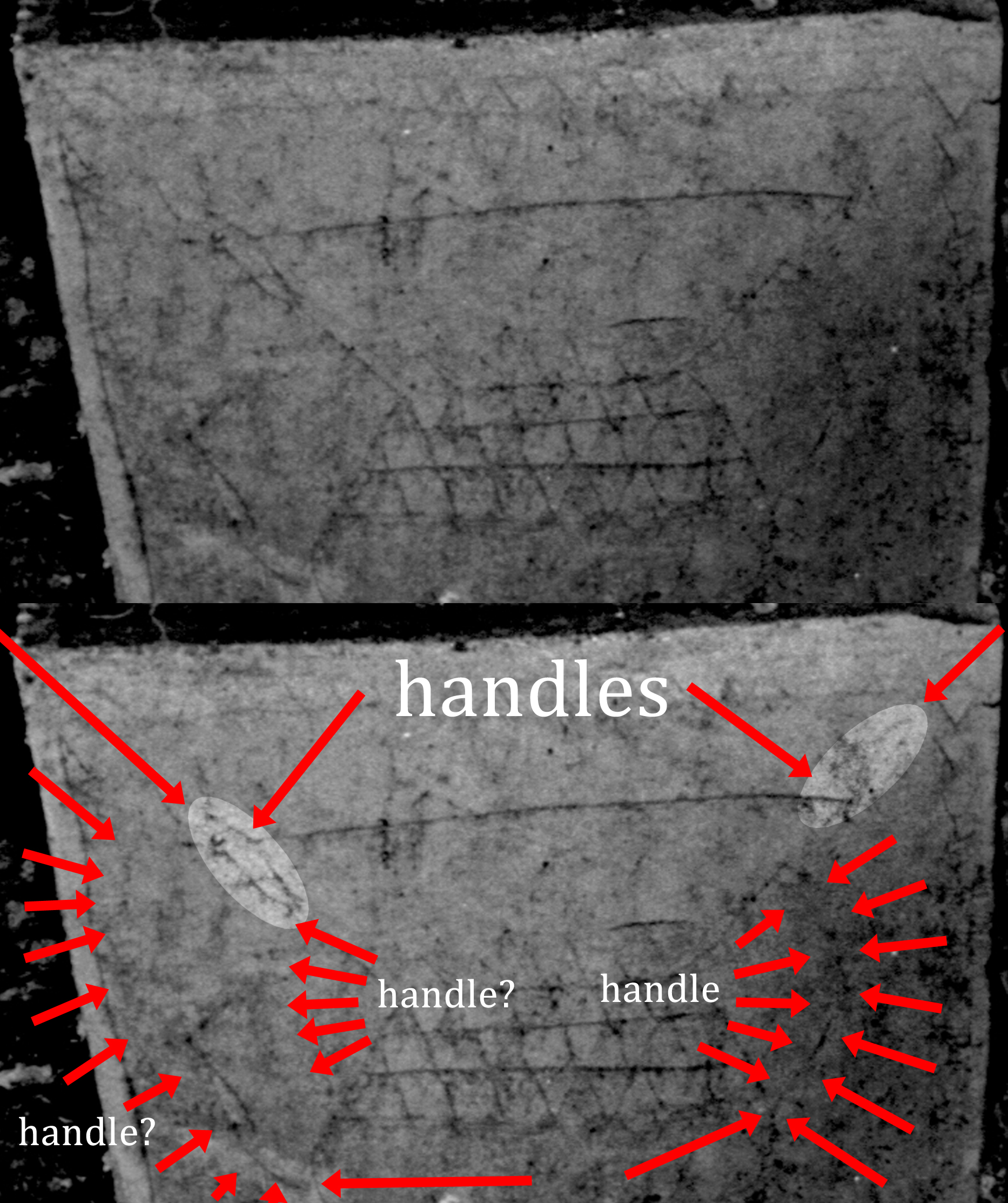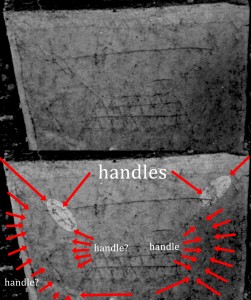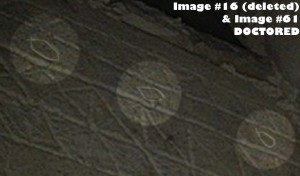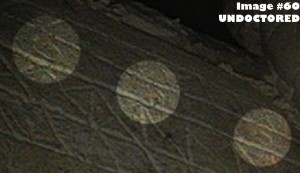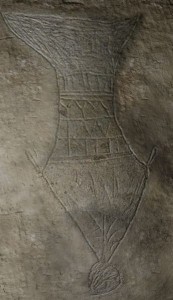I’ve taken the time to further illustrate the First Replica next to the Second as well as what I’ve been able to trace from the photographs of the genuine ossuary. Click to enlarge to see the notes.
The first replica does well at reproducing some very strong visual elements of the original ossuary that are very prominent without knowledge of the alleged script. These are features that anyone would notice at a glance, simply because of the pattern the lines make: The prominent “V” shape between the “he” and the “nun” as well as the prominent “lens” shape between the “yod” and the “waw” as well as the “tav tail” on the “he.”
The second replica destroys and filters these features, instead leaning towards forms that better express “Jonah” with little ambiguity.
Additionally, on the first replica, the supposed “nun” is so very widely broken that there is no way to read it as one scratch. It also has some of the “minor” scratches that were prominent.
Thoughts?
Peace,
-Steve
